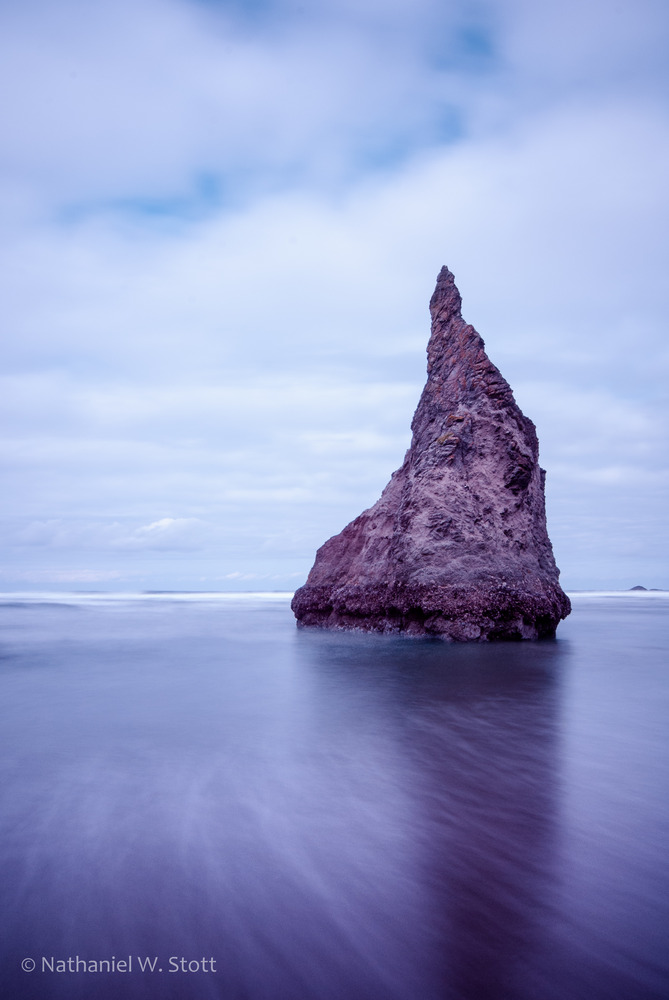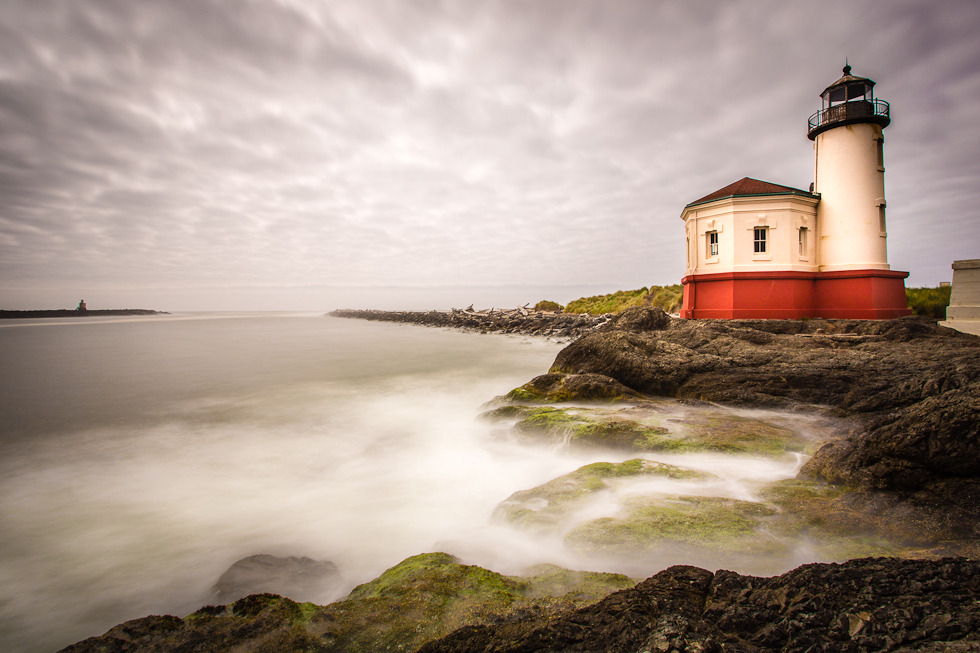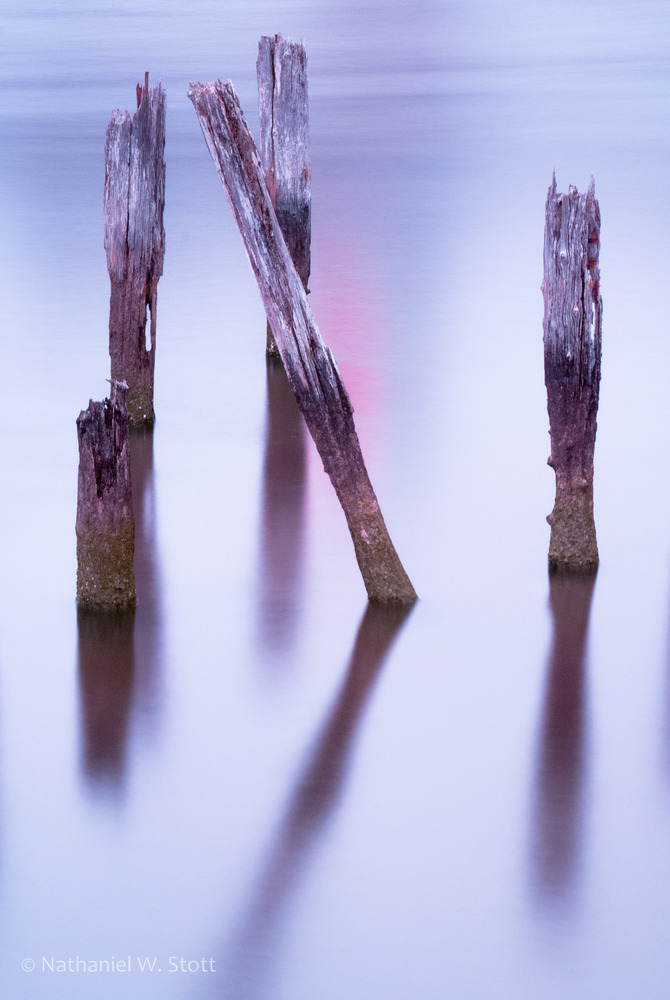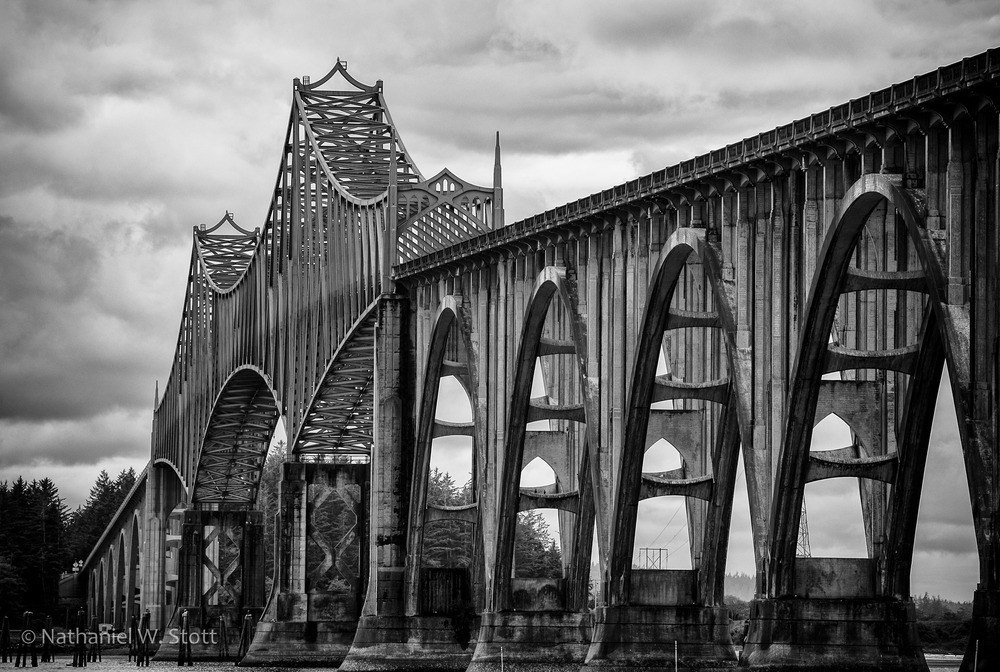29
2012Bandon Beach, Oregon
Anne and I decided to take advantage of the long Memorial Day weekend to travel to Bandon for some Oregon coastal photography. In general, the Oregon coast is spectacular for its coastal sea stacks and its vivid topography. Bandon especially has a bunch of interesting features that make it spectacular for photography. We knew in advance that we wanted to focus on long exposures so we invested in some 10-stop neutral density filters that would allow us to slow our shutter speeds down during the day. As well, we wanted to experiment with light painting and especially with light orbs.
While Oregon is just the next state south, Bandon is closer to California than it is to Washington so it took roughly 8 hours to make the journey. We stayed at a nice little hotel just directly across from Old Town on 101 called The Inn at Old Town. The place was nice and quiet and provided great value (though the bed could have used some work), especially since we could just walk across the road to grab food and take pictures of the harbor area.
We came into town hungry from the drive and so we jumped across the street to eat at the recommended Alloro Wine Bar & Restaurant. The food and service were excellent. I had a Pistachio Crusted Halibut for my main course and it was probably one of the finest fish dishes I’ve ever had. The place was so good that we wound up coming back during our trip, which is something we rarely do on short trips because we try to get maximum variety.
We spent Saturday morning working the Bandon beach sea stacks with long exposures. The tide was heading out, which provided good opportunities to wander in and amongst the rocks and get some of the finer detail. It also allowed us to form a proving ground to help us see what worked and what didn’t with the longer exposures. We both had rubber boots, which allowed us to set up in the surf.
This is a tricky business, because every ten minutes or so a larger wave would come in that would require a retreat to higher land (Pro Tip: I missed one of these and wound up with a boot full of water. Always keep your eyes on the water.). Also, these larger waves tend to cause your tripod to sink into the sand at each turn, and with long exposures that can lead to blurred subjects. The trick is to get your tripod fully embedded by pushing it down until it hits firmer sand deeper down as a wave passes and liquefies the top layer.
In the afternoon, we spent time at the Coquille River Lighthouse. While the light isn’t as large as some, it has an interesting octagonal keeper’s house and rich colors, which make it impressive in its own right. As well, it’s possible to get out on the rocks and shoot back at the light, so you can grab some longer shots that incorporate the waves coming up the mouth of the river.
(photo by Anne Archambault)
We also spent time working on shooting various pilings in the water. I’ve always had great interest in the somewhat ghostly appearance of long exposure images of lone pilings, so we took advantage of the waning light to really work some of these subjects before dinner.
Finally, we closed out the evening with some night shots of orbs on the beach. We’d practiced making orbs at home before the trip and had rigged up a strand of portable LED Christmas lights we’d purchased for a Christmas camping trip to Death Valley several years ago. The basic idea is to bundle most of the lights in a wad near the end of the strand so you have a concentrated mass of light. You can also add color to the bundle by adding cinematic gel (or some other translucent colored substance). You also need to black out any remaining lights on the strand by covering them with black duct tape (or gaffing tape if you have it). With this setup and a little practice, you can start creating light orbs pretty much anywhere you can get long exposure times.
(photo by Anne Archambault)
Sunday we spent the day further afield. Our intent was to do one of the various hikes around the area and also try and capture some tidal pools for macro work. We drove south to the Cape Blanco lighthouse and spent time there working the various angles around the light and also spent time doing some close-up work on the iris that grow in this particular area.
We decided on the Blacklock Point hike (about halfway back to Bandon from Cape Blanco) and we made the short hike out to the point just after noon. The path was a little soggy, but most places with standing water also had boardwalks or side paths that avoided getting wet. We’d packed a picnic lunch and so we were able to enjoy a wonderfully private lunch overlooking the Pacific Ocean. Afterwards, we scrambled out to the bluff and spent time making images and taking panoramic pictures.
The final stop of the day was the McCullough Bridge up in Coos bay. I’ve been fascinated with the bridges of highway 101 since I saw a TV special on them some years ago. In Oregon especially they have wonderfully elegant spans. We took up position on the Trans-Pacific Parkway that led to Horsefall Beach as the light started to fad and the rain started to come down. It turned out to be a pretty bad vantage point, too far away to provide perspective I was after.
On Monday, we needed to head slowly back to Seattle. In order to try and dodge a little traffic, we decided to spend the morning in Bandon and then come back in the evening so we were able to spend Monday morning on the beach, again working the sea stacks against low tide. This allowed me to learn from a bunch of the mistakes I’d made on Saturday morning and better tune my compositions. We also had hints of blue sky, which also helped to set the images apart from the previous day.
Since we had to return via Coos Bay, I was also able to give the McCullough Bridge another attempt. This time I found a small access road just under the bridge on the north approach (off East Bay Drive) which provided the composition I was looking for. Low tide was mandatory to gain access to the beach just east of the bridge without getting wet. This allowed for the perspective I was really after the day before.
Our last stop along the coast before heading inland to I-5 was Thor’s Well. You can see excellent images of this on Flickr. Anne and I didn’t hold high hopes because we weren’t going at the right tide nor were we going at sunset. While I was able to get some images of the water draining into the well, I was also able to conclude that the best images of this location involve significant risk to both photographer and equipment! To be sure, it’s a truly awesome location, and I hope to come back and do more photography around the Yachats area of the coast.






